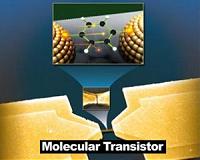 |
Pasadena CA (JPL) Jan 12, 2010 Some might say it's as plain as the nose on your face. But detecting toxic or dangerous chemicals in the microgravity environment of space takes a little extra "sniffing." That's why ENose, or Electronic Nose, spent 10 months on the International Space Station testing whether the technology was useful to detect possible hazardous vapors. Managed by NASA's Jet Propulsion Laboratory in Pasadena, Calif., ENose was the first device designed to run continuously to monitor air and detect potential contamination from spills and leaks that might occur in the crew habitat aboard the space station. ENose returned to Earth from the space station on space shuttle mission STS-128 in September 2009, and early results have proven surprising to investigators. "We were amazed there were many more short events than we expected," said Amy Ryan, principal investigator for ENose at the Jet Propulsion Laboratory. "Overall, we detected several low concentration events of formaldehyde, Freon, methanol and ethanol; most lasted 30-60 minutes and all were at harmless levels. There also were several 'unknown' events - caused by a chemical species that was not on our list, or some other factor in the complex space station atmosphere. We are in the process of identifying them." ENose is about the size of a shoebox, but only half as high. It has 32 sensors trained to detect, identify and quantify 11 chemical species, such as Freon, mercury and other chemicals that could signal the beginning of electrical fires. The sensors were trained to identify certain chemicals, much in the same way we train our own noses. Once we smell something new, somebody tells us what it is and we store that information in our memory. For ENose, sensors were exposed to the various scents, and the information was stored in a data library in the computer's memory. ENose is early technology development that may someday be part of a distributed system for automated monitoring and control of the breathing atmosphere in inhabited spacecraft in the microgravity environment. The flexibility of the device allows it to be trained to identify new compounds. Many important and diverse Earth-based applications also exist for ENose technology. "Since the ENose is an event monitor for air, it could, in principle, be used to detect releases of any chemical species, such as spills of hazardous materials in an industrial, laboratory or transportation accident or in chemical weapons," added Ryan. "With further development this technology could offer unique alternatives to existing technology." "ENose is one of several different tests of new air quality monitors for use in space," said Julie Robinson, International Space Station Program Scientist, at the Johnson Space Center in Houston. "Air quality monitoring is important for crew health and safety because in a closed environment, the crew breathes in any chemical that leaks or spills," Robinson said. Other new technologies currently targeting different types of air monitoring are being tested on the station, including the Microanalyzer-Gas Chromatograph/Differential Mobility Spectrometer instrument and the Vehicle Cabin Air Monitor.
Share This Article With Planet Earth
Related Links Jet Propulsion Laboratory Computer Chip Architecture, Technology and Manufacture Nano Technology News From SpaceMart.com
 Scientists Create World's First Molecular Transistor
Scientists Create World's First Molecular TransistorNew Haven CT (SPX) Jan 03, 2010 A group of scientists has succeeded in creating the first transistor made from a single molecule. The team, which includes researchers from Yale University and the Gwangju Institute of Science and Technology in South Korea, published their findings in the December 24 issue of the journal Nature. The team, including Mark Reed, the Harold Hodgkinson Professor of Engineering and Applied Scien ... read more |
|
| The content herein, unless otherwise known to be public domain, are Copyright 1995-2009 - SpaceDaily. AFP and UPI Wire Stories are copyright Agence France-Presse and United Press International. ESA Portal Reports are copyright European Space Agency. All NASA sourced material is public domain. Additional copyrights may apply in whole or part to other bona fide parties. Advertising does not imply endorsement,agreement or approval of any opinions, statements or information provided by SpaceDaily on any Web page published or hosted by SpaceDaily. Privacy Statement |